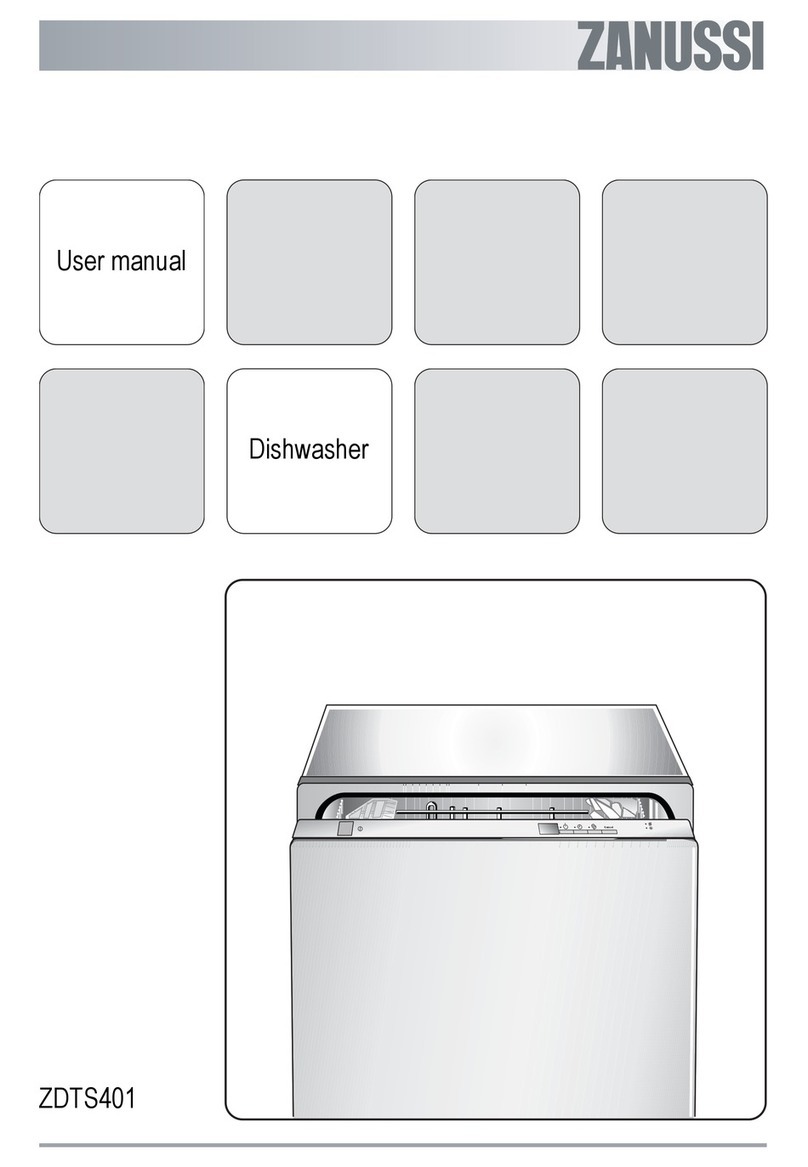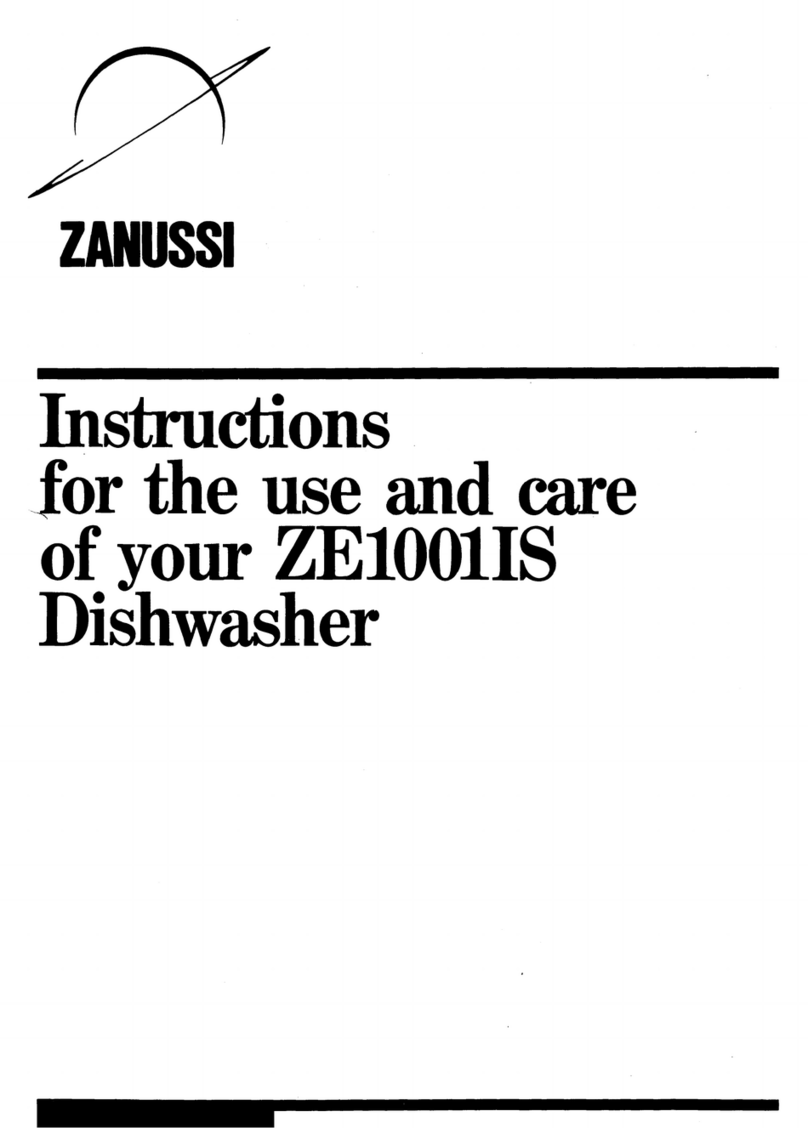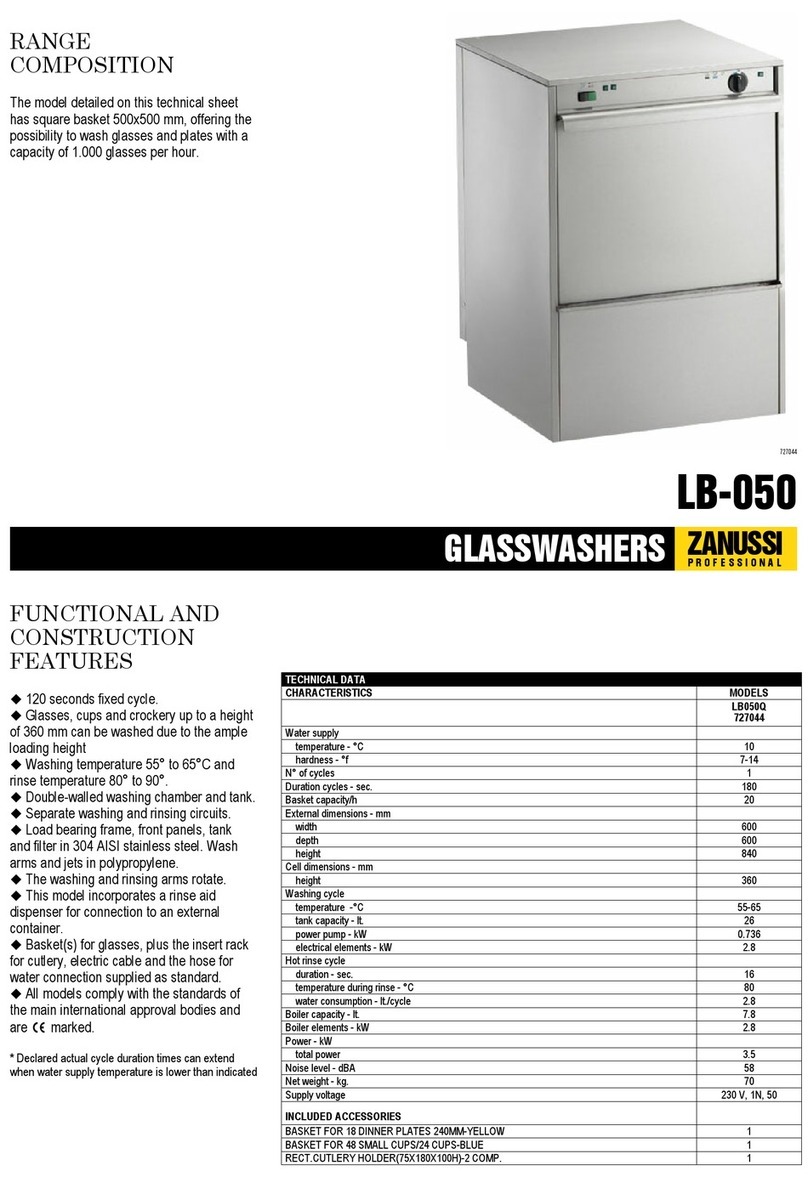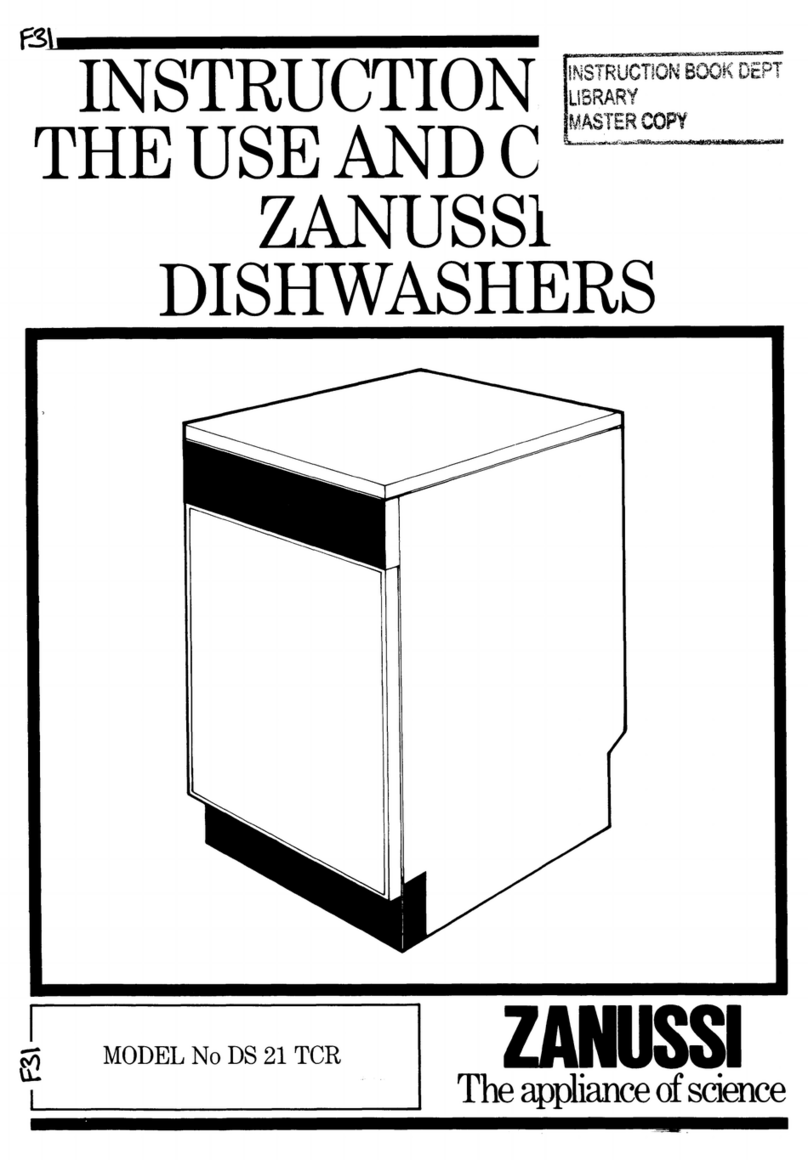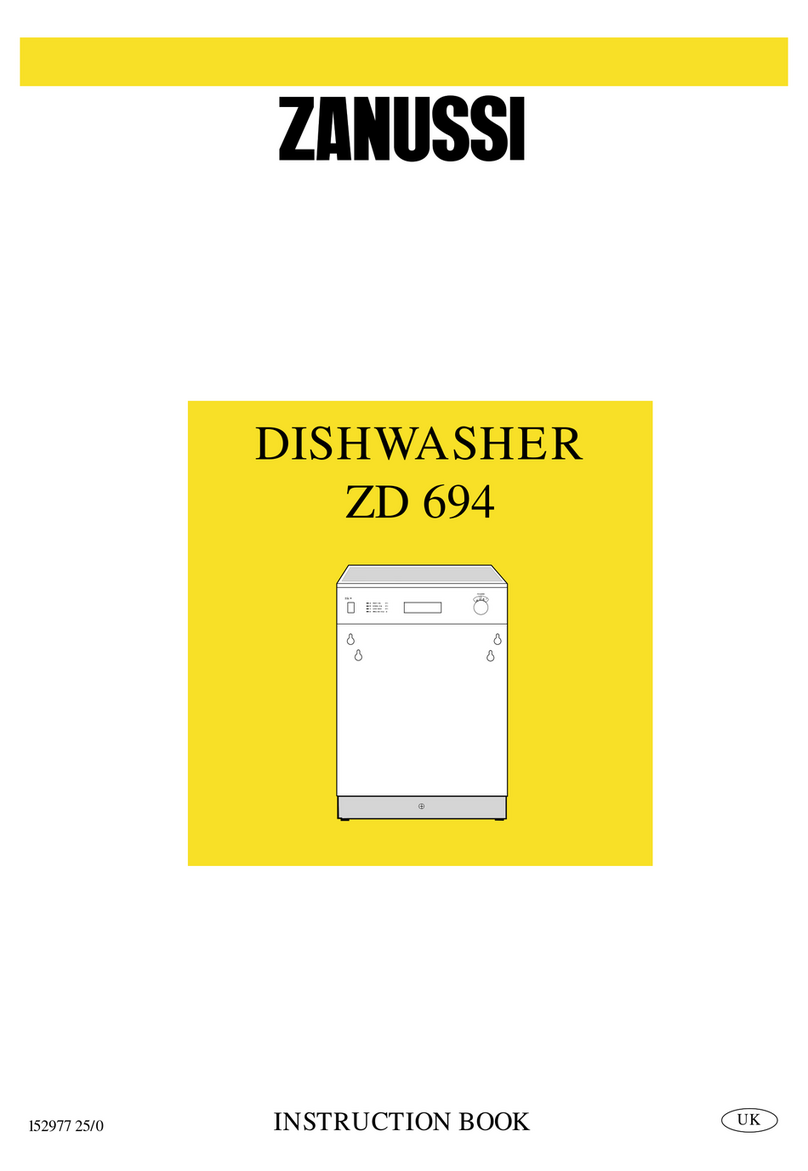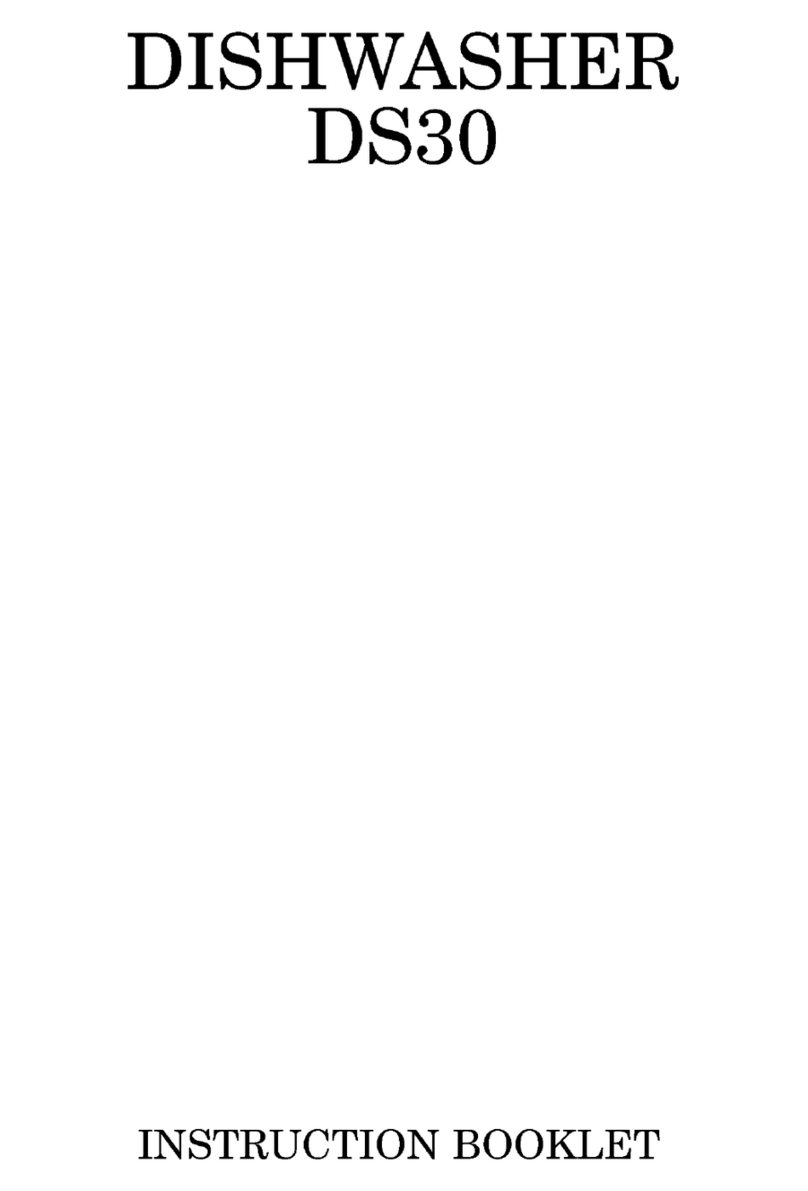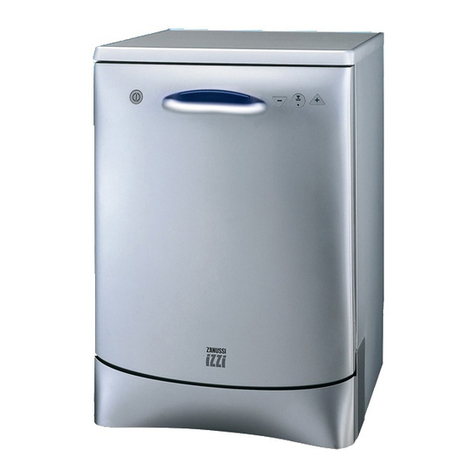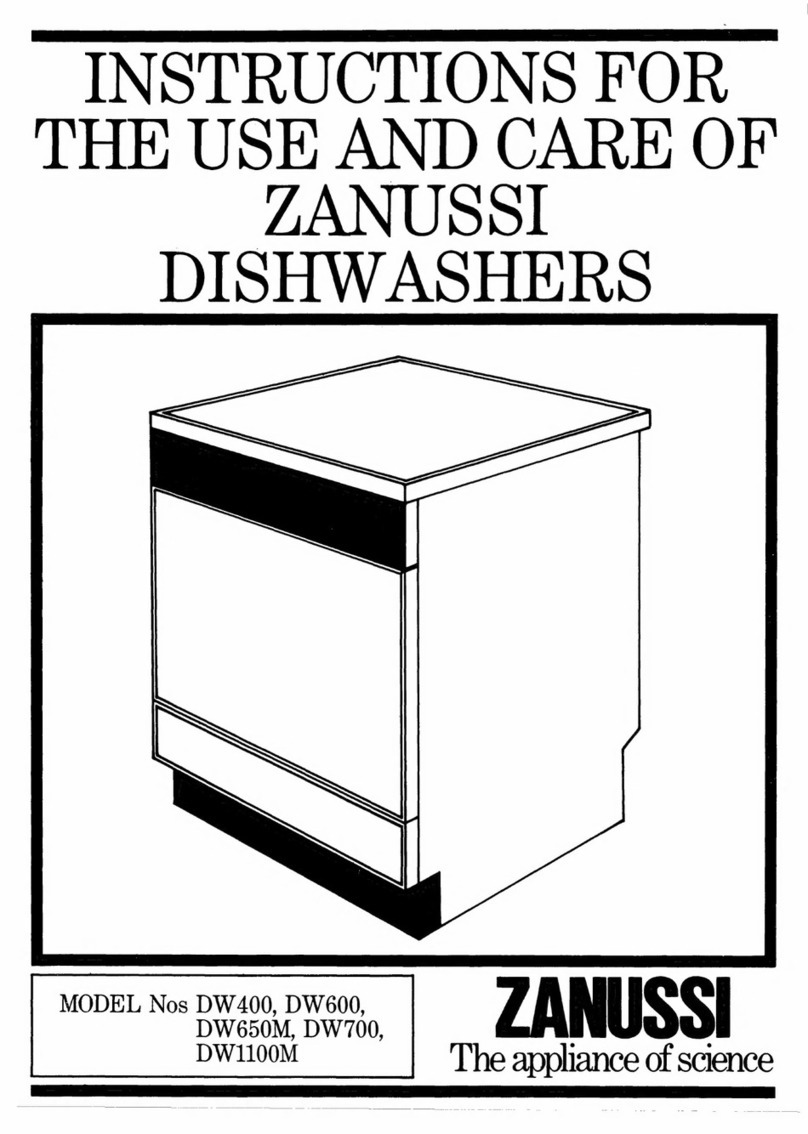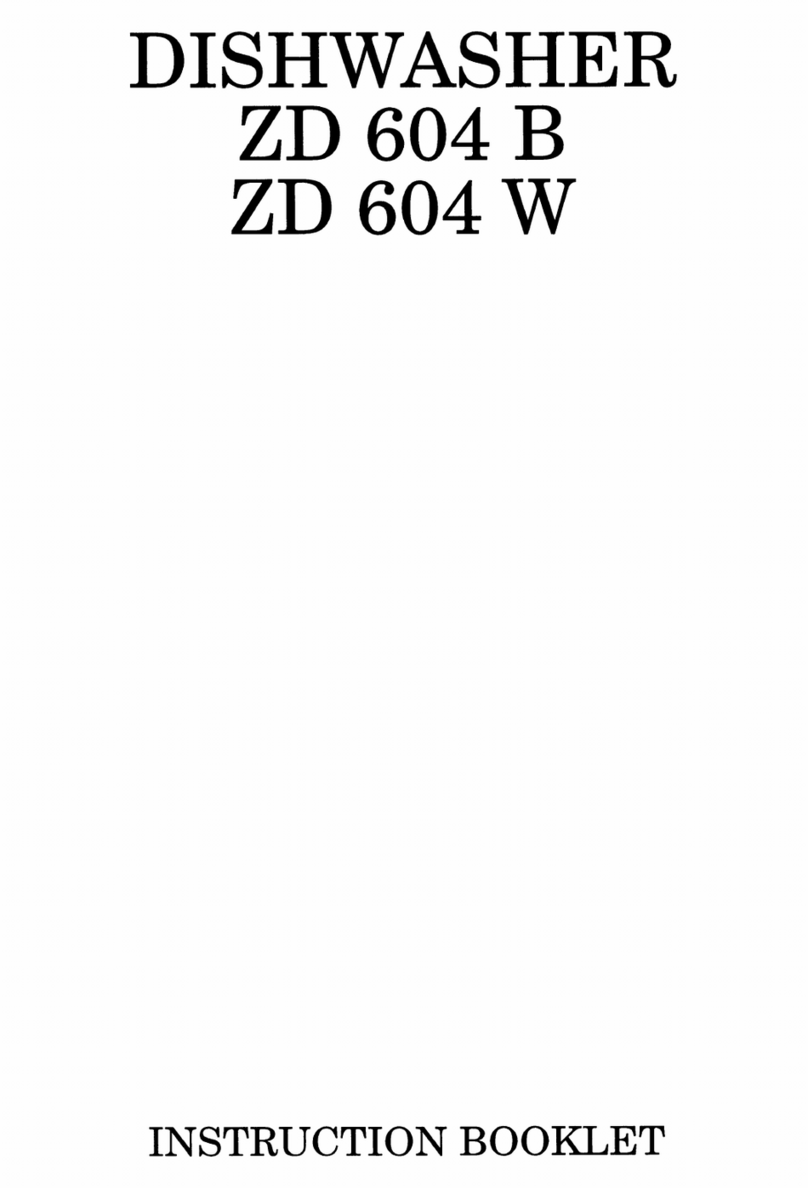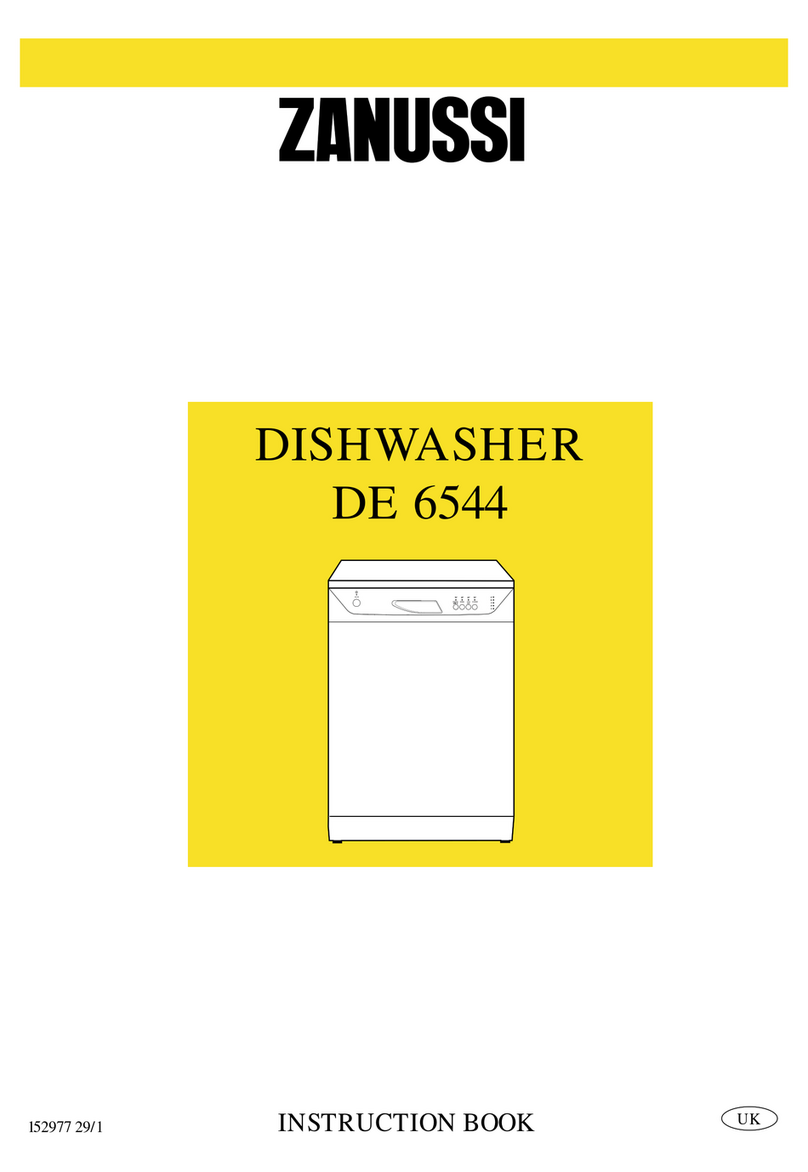18
It is most important that this instruction book should be
retained with the appliance for future reference. Should
the appliance be sold or transferred to another owner, or
should you move house and leave the appliance, always
ensure that the book is left with the appliance in order that
the new owner can get to know the functioning of the
appliance and the relevant safety information.
This information has been provided in the interest of your
safety. You MUST read it carefully before installing or
using the appliance.
Installation
●Check yo r dishwasher for any transport damage. Never
connect a damaged machine. If yo r dishwasher is
damaged, yo sho ld contact yo r s pplier.
●For safety reasons it is dangero s to alter the specifications
or attempt to modify this prod ct in any way.
●Any electrical and pl mbing work req ired to install this
appliance sho ld be carried o t by a q alified and
competent person.
●Care m st be taken to ens re that the appliance does not
stand on the electrical s pply cable.
●The sides of the dishwasher m st never be drilled to
prevent damage to hydra lic components.
Child safety
●This appliance is designed to be operated by ad lts.
●Children sho ld not be allowed to tamper with the controls
or play with the prod ct.
●Packaging parts may be dangero s for children, who co ld
even be s ffocated! Yo sho ld therefore keep all
packaging well away from children.
●The water in yo r dishwasher is not for drinking. Detergent
resid es may still be present in yo r machine. Keep
children well away from yo r dishwasher when the door is
open.
●Keep all detergents in a safe place o t of children's reach.
Your dishwasher in day-to-day use
●Items that are contaminated by petrol, paint, steel or iron
debris, corrosive, acidic or alkaline chemicals m st not be
washed in this dishwasher.
●Under no circ mstances sho ld yo open the door whilst
the appliance is in operation, especially d ring the washing
phase, hot water may escape. However, if the door is
opened, a safety device ens res that the machine stops.
●Only se prod cts (detergent, salt and rinse aid) specifically
designed for se in dishwashers.
●Long bladed knives stored in an pright position are a
potential hazard.
●Long and/or sharp items of c tlery s ch as carving knives
m st be positioned horizontally in the pper basket.
●When finishing loading or nloading close the door, as an
open door can be a hazard.
●Do not sit or stand on the open door.
●Isolate the appliance from the power s pply and t rn off the
water s pply after se.
●This prod ct sho ld be serviced by an a thorised service
engineer, and only gen ine spare parts sho ld be sed.
●Under no circ mstances sho ld yo attempt to repair the
machine yo rself. Repairs carried o t by inexperienced
persons may ca se inj ry or serio s malf nctioning.
Contact yo r local cons mer services department. Always
insist on gen ine spare parts.
Disposal
Dispose of the dishwasher packaging material correctly.
All packaging materials can be recycled.
Plastic parts are marked with standard international
abbreviations:
>PE< for polyethylene, e.g. sheet wrapping material.
>PS< for polystyrene, e.g. padding material (always CFC-
free).
>POM< for polyoxymethylene, e.g. plastic clips.
Cardboard packaging is man fact red from recycled paper
and sho ld be deposited in the waste paper collection for
recycling.
As and when yo cease to se yo r dishwasher and withdraw
it from service, yo r sho ld render it nserviceable before
having it disposed of.
Warning! Children at play co ld lock themselves in yo r
dishwasher or otherwise endanger their lives. Therefore c t off
the power s pply cable and make the door closing device
n sable to prevent children from being trapped inside.
For the disposing of the appliance please take it to a recycling
centre or to yo r dealer who will, for a small contrib tion to the
costs, dispose it for yo .
Economical and
ecological dishwashing
●Ens re that the water softener is correctly adj sted.
●Do not pre-wash nder r nning water.
●Select the wash programme to s it the nat re and degree of
the soiling on the dishes.
●Do not se more detergent, special salt and rinse aid than is
recommended in these operating instr ctions and by the
man fact rer of the respective prod ct.
Safety instructions


